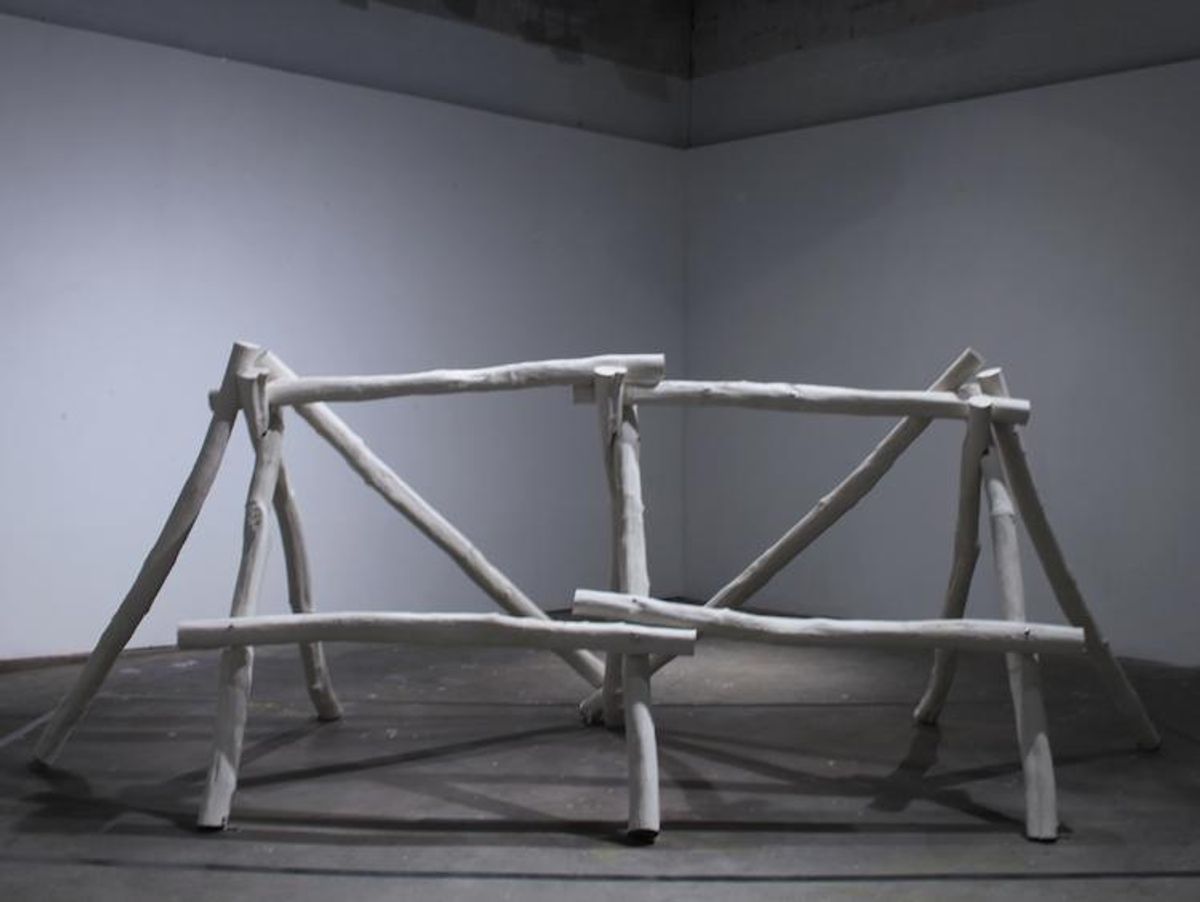
Photography Courtesy of Phoenix Lindsey-Hall
Hate crimes against queer people are seen up close in artist Phoenix Lindsey-Hall's haunting porcelain sculpture, 'Shepard.'
October 12 2015 4:52 PM EST
October 13 2015 6:28 AM EST
By continuing to use our site, you agree to our Private Policy and Terms of Use.

Hate crimes against queer people are seen up close in artist Phoenix Lindsey-Hall's haunting porcelain sculpture, 'Shepard.'
Queer artist Phoenix Lindsey-Hall creates porcelain replicas of the "weapons" used in hate crimes against lesbian, gay, and trans people, and the single work in her new solo show captures violence in a haunting tableau. Titled "Shepard," it's a life-sized porcelain sculpture modeled after the wooden fence where Matthew Shepard was beaten, tortured, and left to die on October 6, 1998. "I believe that queer people have a unique relationship with violence from historical events such as Stonewall to the thousands of trans people that are still murdered each year," Lindsey-Hall explains to Out. "Our collective pain and suffering give way to an impenetrable web of understanding and love. We become stronger through adversity."
As the first solo exhibit at Christopher Stout Gallery, a new artist space located in Brooklyn, Lindsey-Hall is setting a precedent and articulating a powerful statement that will certainly resonate with anyone who sees it. We caught up with the artist to find out more about her creative process, "gender fluid" art, and what frightens her most at the moment.
Out: Why was it important for you to create this piece around the Matthew Shepard story?
Phoenix Lindsey-Hall: There was a time, not so long ago, that I thought I would never see marriage equality in my lifetime. We have come a long way, in a relatively short period of time. However, as we have landmark successes, it is imperative that we remember and honor those who were lost in the struggle. Matthew Shepard represents how far we have come in the fight for equality, while asking us to not forget that the struggle is not over.
Do you consider yourself a queer artist?
I do. Once I had a visit with a curator who got to my studio before I did, so he had a chance to see my work without meeting me first. I was delighted and intrigued when he said he couldn't tell my gender from the work. I guess I make work as gender fluid as I am!
Where were you when Matthew Shepard was murdered?
Matthew was taken the year I came out in high school. I remember the fence on the cover of Time magazine. I remember Bill Clinton's heartfelt speech about him. I remember seeing Ellen, who had recently come out on national TV, in tears as she spoke about what loosing him meant to our community. As a young queer person growing up in the South, Matthew came to represent an ever-present tension that was the backdrop of my coming out story.
Have you received any word from his family about the installation?
We have been in conversation with the Matthew Shepard Foundation and I have reached out to his family. I want to be very respectful and mindful of their deeply personal continued loss, while opening an important community-wide dialog about violence against our community. I hope to continue to deepen my connection with the foundation in the future.
Describe the creative process for this piece.
Making a 16-foot long, porcelain, free-standing sculpture is a logistical nightmare. The first challenge was making the large plaster molds and slip casting over 50 individual pieces. Then developing a strategy to kiln fire that much clay, while keeping all the pieces in order and not breaking everything in the process. I am forever grateful to my beautiful wife, who rolled up her sleeves and jumped in to help with the logistics and organizing.
Was it different from past work you've made?
For years, my work has been about queer hate crimes. I have found that hate crimes are often similar to crimes of passion, wherein whatever object happens to be laying around is transformed into a weapon. I use bisque white clay to recreate these domestic objects, including hammers, bats and pillows. While the clay is still wet I distort the form so the object becomes the body during the act of struggle. This work has given me both the aesthetic and conceptual knowledge that I needed to make "Shepard."
Are you working on any new projects?
As we approach the 20th anniversary of losing Matthew, it's my hope that this work goes on tour to raise awareness and conversation. We are currently working on developing a tour schedule. People don't realize how much administrative tasks go into being an artist.
Is there anything happening in the world right now that frightens you?
Kim Davis.
What do you feel like the LGBT community needs today more than ever?
Through working on this sculpture, I have had the opportunity to have countless conversations about Matthew Shepard. What has struck me most is that many teenagers and young adults don't know his story, or even his name. On one hand, it is amazing that things have progressed to a point where they don't have to know, however it is so important that his story and what he represents is not lost between generations. I think we need to truly appreciate and understand the advances we have made, and to do so we must have one foot firmly grounded in our past.
"Shepard" is on view through Nov. 2 at Christopher Stout Gallery, Brooklyn, NYC.
Beware of the Straightors: 'The Traitors' bros vs. the women and gays